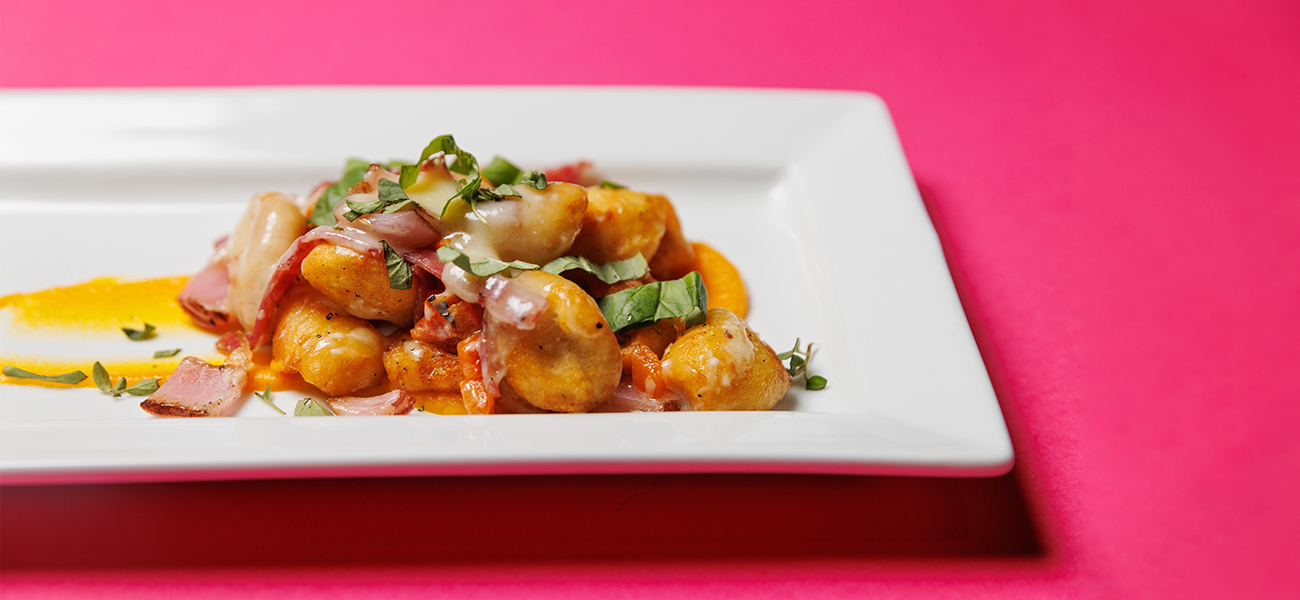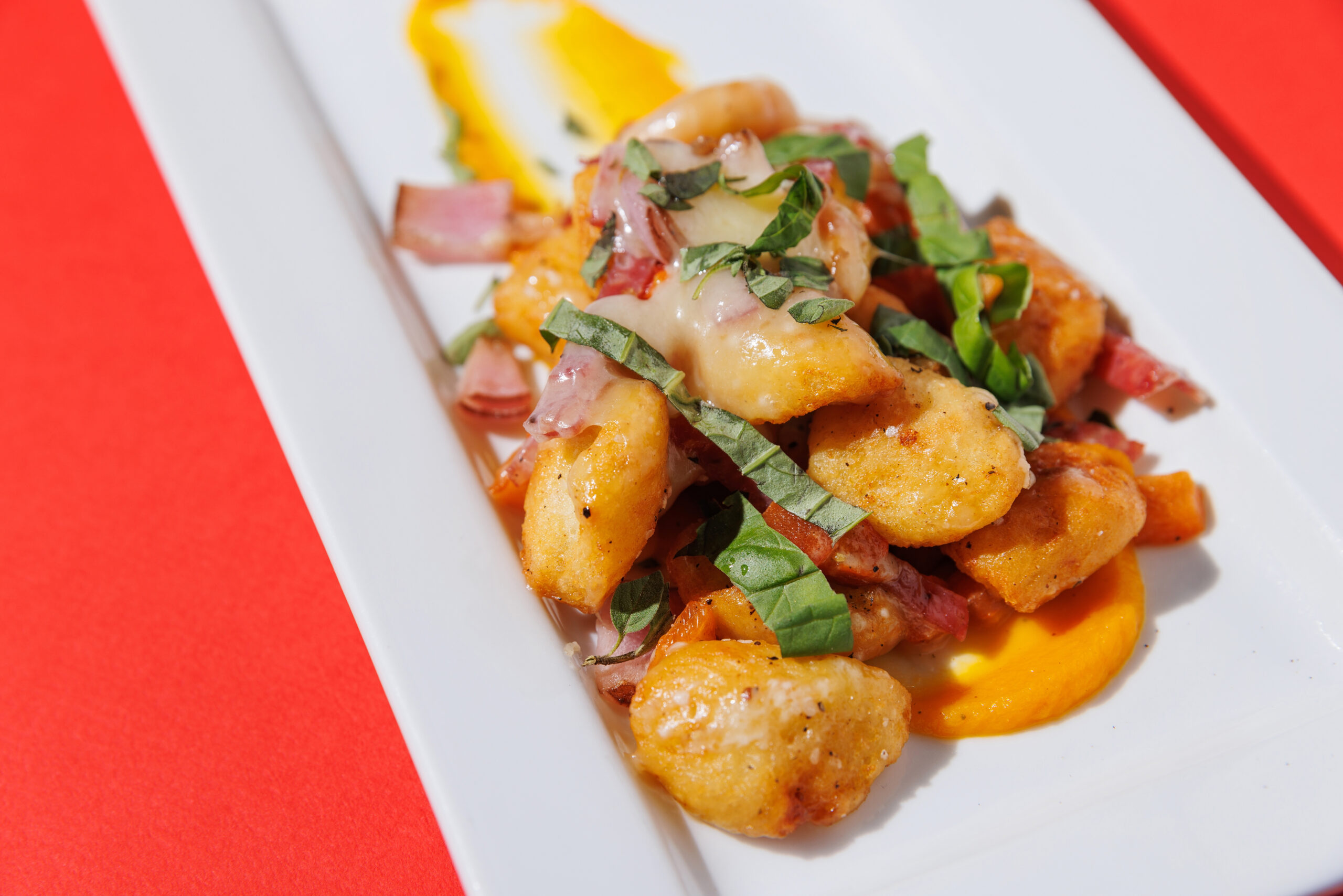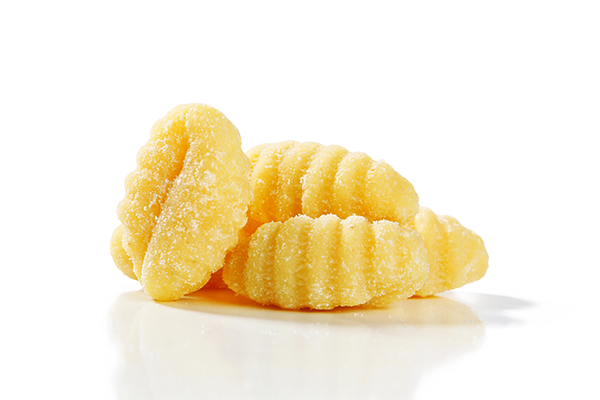
The secrets to airy, tender gnocchi, from inside the kitchen at Nino’s
Good gnocchi should taste like little potato clouds.
This is the philosophy of chef Elton Hyndman, who makes it from scratch at his restaurant, Nino’s.
“The lightness always takes people by surprise,” Hyndman says.
|
|
A plate of Nino’s gnocchi is often an introductory course for local diners. Some have never tried it before, while others haven’t tasted a fresh, handmade version. The gnocchi are like tiny, pillowy dumplings, made to order with egg, flour, russet potato, oil and salt.
The ingredients are simple, but the secret sauce is the technique.
Gnocchi is tricky—add too much flour or overwork the potato, and it gets dense and heavy. Overcook it, and it could end up mushy. Nino’s employs a light hand, fluffing its potatoes with a fork and adding flour slowly and deliberately.
It hand-rolls each morsel on a ridged wood board. The ridges look decorative but serve an even more important function.

“They’re like little sauce caverns—a place for the sauce to land,” Hyndman says.
Today, that sauce is a butternut squash puree, coating poached-then-pan-fried gnocchi. It’s finished with grilled onion, roasted pepper, julienned salami, melted cheese and fresh herbs.
 The kitchen started making the pan-fried gnocchi as bar snacks for the staff to munch on while they worked. The crispy-but-fluffy gnocchi proved so addictive, they deserved a spot on the menu.
The kitchen started making the pan-fried gnocchi as bar snacks for the staff to munch on while they worked. The crispy-but-fluffy gnocchi proved so addictive, they deserved a spot on the menu.
Nino’s reinvents its gnocchi dish around four times a year with different sauces and techniques. Other versions have cloaked the dumplings in sauces made from pesto, blue cheese, Asiago cream or roasted corn. Served as an appetizer, it’s the kind of plate that lends itself to sharing, as diners can stab a fork into each tender dumpling.
And for Hyndman, fresh and house-made is the only way to serve gnocchi—or any kind of pasta.
“Fresh pasta has a lot more bounce than dried pasta,” he says. “When you eat a forkful of fresh spaghetti, the shapes aren’t as uniform and the noodles don’t sit together the same way. Texturally, it helps the dish’s bite and its ability to hold sauce.” ninos-italian.com
![]()
Tongue twisters
Gnocchi isn’t super common on Baton Rouge menus, so Hyndman says diners often ask him to pronounce the word. And that’s OK—even the writers at food outlet Mash acknowledge that gnocchi is “difficult to spell, tougher to pronounce and almost impossible to get just right.” The truth is that even in Italy, pronunciations will vary based on regions and accents. But here in the states, something close to nyow·kee will get you by. Here’s a primer on American pronunciations of some other pasta dishes.
cannelloni
ka·nuh·low·nee
fusilli
fyoo·si·lee
linguine
lin·gwee·nee 
orecchiette
ow·ray·kee·eh·tay
pappardelle
paa·paar·deh·lay
penne
pe·nay
tagliatelle
ta·glee·uh·teh·lee
This article was originally published in the February 2024 issue of 225 magazine.
|
|
|


